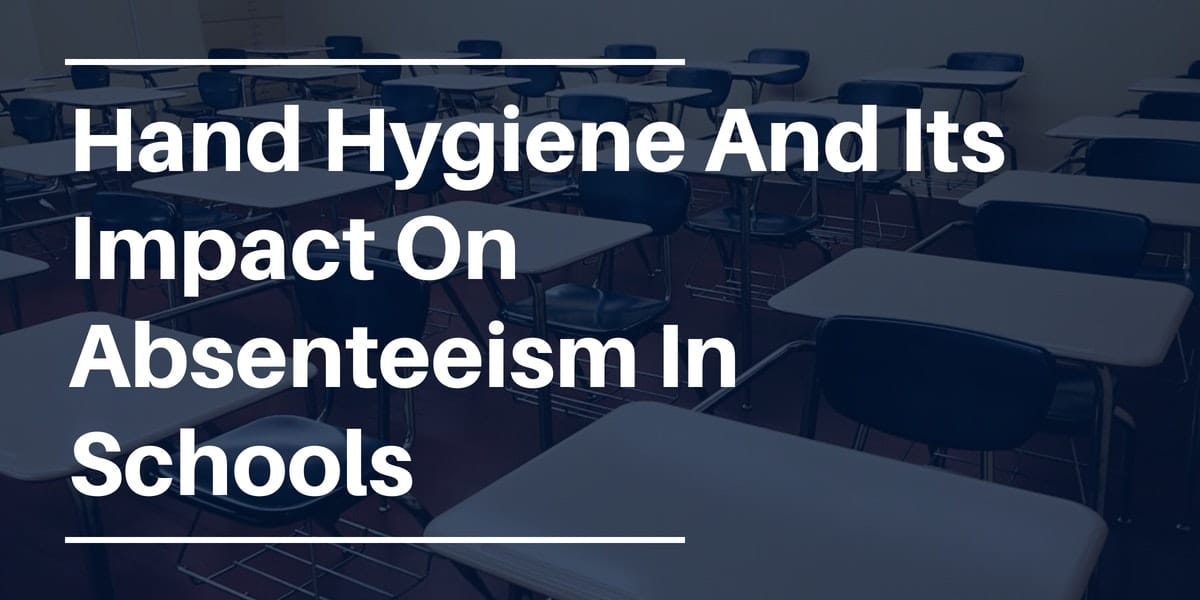Student absenteeism is a critical component of school funding and is directly influenced, almost exclusively, by student health, much of which may be correlated to hand hygiene and school surface sanitation.
How Hand Hygiene May Impact Absenteeism in Schools
School-aged children are highly susceptible to several germs commonly found on surfaces throughout every school and facility in the United States, including:
- Influenza - The flu.
- Rhinovirus - The common cold, and;
- Norovirus - The stomach flu, vomiting, and diarrhea.
Surface-to-hand contamination is the most common method of germ transmission for these types of viruses.
These germs have a surface survival rate of approximately 24-48 hours, depending on variable conditions, during which time they can infect anyone that comes in contact with them.
An increase in hand hygiene practices has been shown in lab studies and real-world case studies to decrease the instance of infectious disease on surfaces and the corresponding occupant (student and teacher) absenteeism.
Absenteeism in Schools
In the U.S., funding for public schools is determined by student attendance.
It is estimated that the average student misses approximately 4.5 days of school per year, resulting in more than $10 billion in lost funding.
Another (estimated) $1.7 billion is lost to teacher absenteeism (roughly 5.3 days per year) due to paid sick leave and the additional costs of substitute instructors.
Unfortunately, the financial burden of funding for schools is not the most significant challenge.
Studies demonstrate that poor hand hygiene practices can contribute to an increase in community-based infections including gastrointestinal, skin and respiratory infections.
Additionally, there has been a steady increase in the global burden of infectious diseases, resulting in an estimated 13 million deaths annually.
Between 1980 and 1992, deaths attributed to infectious disease increased by 22%.
This is a cause for concern as we continue to see a decline in hand hygiene promotion and education.
Handwashing Initiatives as an Intervention Strategy
Handwashing intervention programs in schools that focus on student education have demonstrated positive outcomes for all occupants, resulting in a significant reduction in absences, improved overall handwashing practices, and a decrease in observable germs and disease-causing bacteria.
According to a recent study conducted by a Virginia elementary school;
In addition to seeing a 71% decrease in school absences in the 30 days following the experiment, they said teachers reported observing, on average, an 89% improvement in hand-washing behavior among their students.
Moreover, cultures from the hands of 10 students revealed an increase in resident skin flora, indicating a decrease in transient flora, which is most likely to cause illness.
2nd-grade hand hygiene experiment reduces school absenteeism by 71%
Pairing Handwashing and Cleaning for Health Strategies
High-quality handwashing and high-performance sanitation and disinfection strategies are symbiotic within a facility focused on cleaning for health first.
This means:
- Avoiding the use of toxic chemical cleaning products that can be deadlier to occupants than the germs they are removing.
- Employing technologially advanced equipment that operates in a proven sustainable manner which reduces resource use to an absolute minimum, and;
- Focusing on preserving and improving the world we intend to leave the children that are being raised and educated within the public school system by eliminating harmful waste byproducts that pollute the environment.
References & Resources
- A Closer Look At Hand Hygiene In Schools And Its Impact On Absenteeism
- Survival of Microorganisms on Inanimate Surfaces
- Effects of Hand Hygiene Campaigns on Incidence of Laboratory-confirmed Influenza and Absenteeism in Schoolchildren, Cairo, Egypt
Takeaway
As time goes on, more and more studies are establishing a strong correlation between hand hygiene, surface contamination, and occupant absenteeism in schools.
According to the Deb Group
The largest contributor to absences from school is illness.
Teachers and children alike are missing school because of easily avoidable illnesses, which could be greatly reduced by correct hand hygiene techniques being taught, particularly in primary schools.
Absenteeism in children can massively impact their learning and class performance. Absenteeism also affects parents, who are forced to take time off to look after their ill children.
How To Teach Hand Hygiene At School on Global Hand Washing Day
While an increase in cleaning and infection control and prevention procedures is typically advisable for most schools and businesses, up to a point--past a certain level, it becomes an unnecessary waste of resources and ignores the most critical component--hand hygiene.
Successful large-scale handwashing campaigns are only possible with the right tools, and the right partnership can help you get started right away.
Contact us today and discover why Vanguard Cleaning Systems® is the Standard of Clean® for businesses throughout Northwest Arkansas, Missouri, and Oklahoma.
In Oklahoma, dial 918-960-4450
In Arkansas, dial 479-717-2410
In Missouri, dial 417-812-9777


